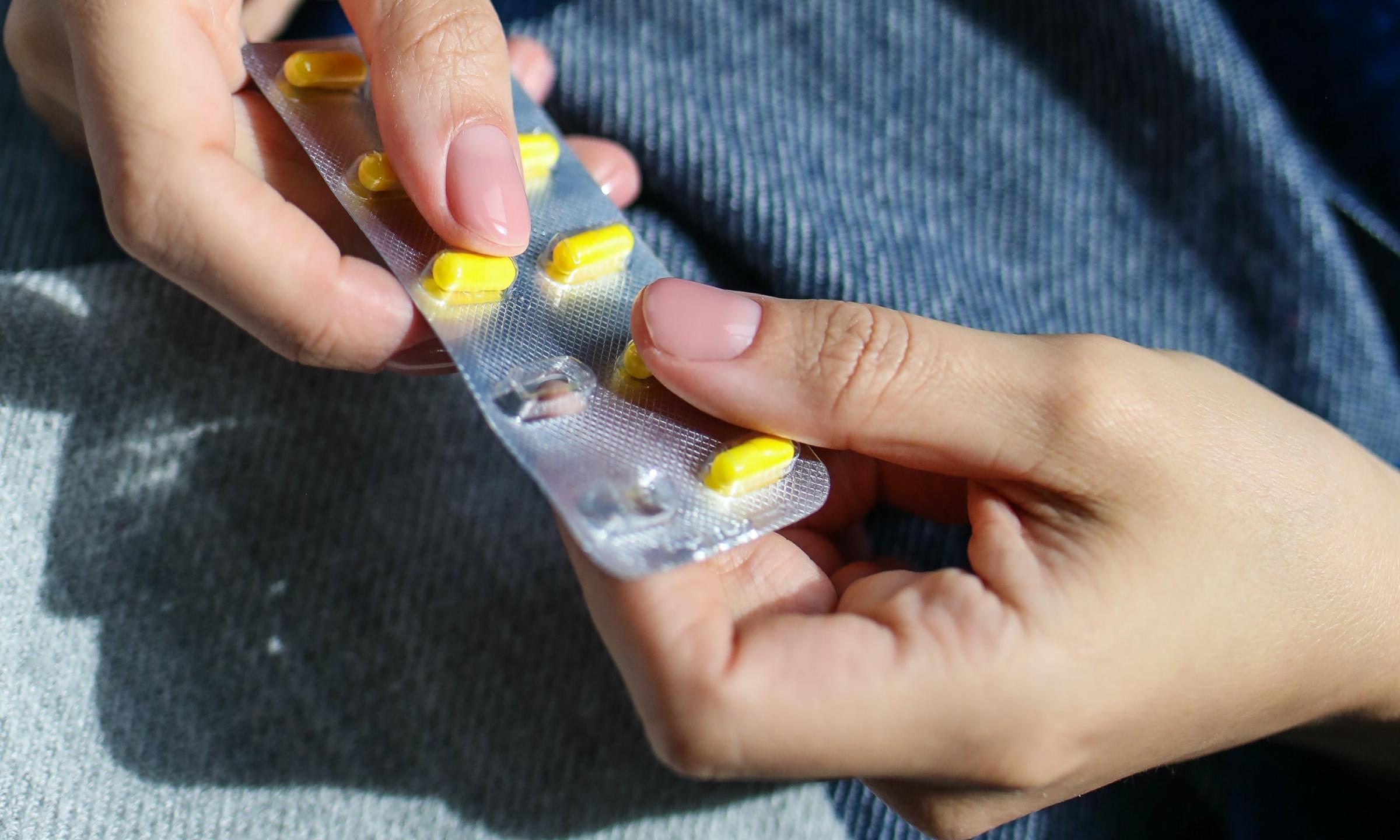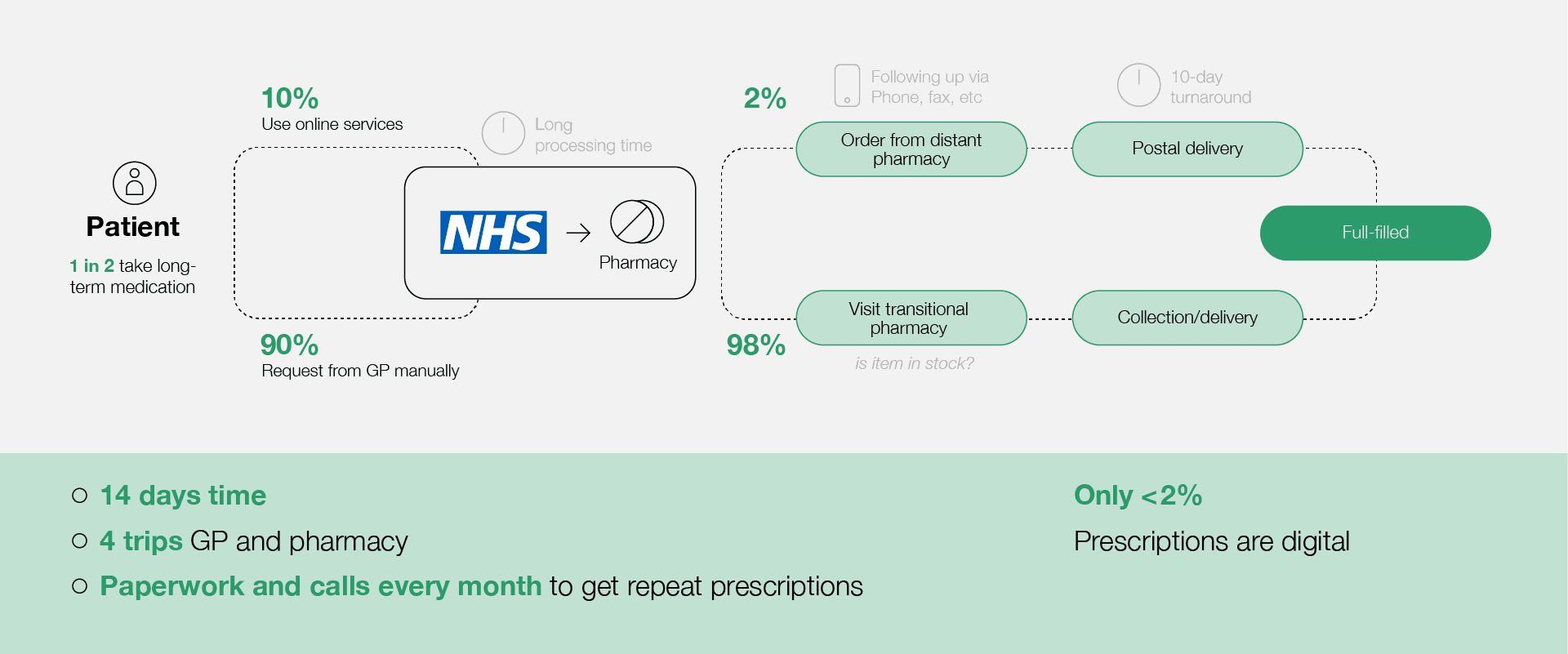
The future of the pharmacy: A conversation with Healthera

Today, the age-old business model most retail pharmacies follow involves more clerical stress and paperwork than communication with patients. We’re talking about an industry that continues to be 98% manual, despite 100% of consumers pushing for personalized, on-demand services — meaning pharma as a whole is beyond due for disruption.
What's more, the ongoing COVID pandemic has made it difficult for store employees to execute on-site operations — like managing prescriptions and selling over-the-counter (OTC) goods — and has put customers (especially those with chronic conditions) at risk every time they cross the threshold. As a result, pharma companies have started to change their mindset, embracing cutting-edge technologies to not only deliver medication from store to door, but prevent infection before it occurs.
Within this set of pioneers, Healthera was among the first to promote pharmacies from their former role as drug suppliers alone, to true providers of primary care. Having tapped into an opportunity that could potentially affect thirty million consumers in the UK, the startup digitized the prescription experience to connect patients with pharmacy- and GP-provided services through a single, centralized platform.
In our latest BLT session, we caught up with Healthera CTO Jun Seki to learn where their big idea came from and their steps for success in building the UK’s first-ever local prescription delivery network.
Step 1: Seize opportunity at the right time
In the UK, one in two people takes medication to manage a long-term health condition, such as diabetes or cardiovascular disease, and 80% of all prescriptions are refills. So you would think that the process of receiving those prescriptions would be simple enough, right?
Not quite. The problem is that prescribing, filling, and picking up prescriptions hasn’t kept pace with rising demand or ramping innovation. The retail pharmacy receives prescriptions from GPs or patients by phone or fax, which makes the operation extremely time-consuming, error-prone, and, consequently, circuitous. On average, it takes ten days and four trips between GP and pharmacy to get your prescription — and that’s assuming your meds will be in stock and you won’t need to wait even longer!

Healthera quickly realized that the only antidote to this problem was digital. Knowing only ten percent of prescriptions orders are placed online, they created the app that allows patients to request, track, and manage repeat prescriptions in just a few clicks. Once received, the pharmacist uses the Healthera CMS assistant to approve it with the GP or NHS, then uses Healthera's local network to fulfill the delivery. Ultimately, the full prescription cycle takes around three days and zero trips to the store.

Step 2: Support local
As mentioned above, Healthera is only as good as the strength of its local pharmacy network, and faster turnaround time is only the beginning.
When we stop to think about it, no other healthcare providers have the opportunity to see patients as often as community pharmacists, but under constant paperwork stress, modern pharmacies lose touch with customers the second they walk out the door. However, backed by Healthera, they can invest more in patient care, improving medication adherence and effectiveness — not to mention cross-sales and customer loyalty.
Another advantage the platform provides is scalability. The pharmacies of the future can easily extend their services to include OTC goods, physical therapy, vaccine booking (key in the time of COVID!), and more, while the e-pharmacy offers pretty much the same as brick-and-mortar institutions and delivery by post.

Step 3: Always be innovating
Not only has Healthera raised the bar with their business model, but also through technology.
Since the key challenges of e-pharmacies revolve around data privacy concerns and trust issues, Healthera integrates into NHS systems through multiple touchpoints, which allow for advanced security and encryption processes.
The company also integrates with a range of third parties and uses data to give partner pharmacies continuous feedback so they can meet community needs and turn locals into loyals. Remarkably, Healthera builds features as an MVP first to test them with early adopters and only then release new updates accordingly — to enable a truly end-to-end, rich customer experience.
Q&A with Healthera CTO Jun Seki: Succeeding despite Amazon and COVID
Are you worried about Amazon coming to the pharmaceutical market?
Amazon certainly brings a lot of innovation to the industry, but 80% of repeat prescriptions are done by local pharmacies. They already have the inventory and all the necessary information and are using their own network to distribute medicine in a much more efficient way. Thus, for Amazon, the cost-benefit of delivering a single package of medicine is not an upgrade. In this regard, the networking effect brought by local pharmacies outcompetes Amazon; that’s why they still haven’t cracked the market.
You don't have any direct competitors. Why do you think this approach hasn't been adopted earlier?
There are lots of innovators in the space; some of them look at online doctors with AI capability while others — like online pharmacies Echo and Well — are coming towards a more centralized hub and integrated system for the individual patient. But there haven’t been any solutions leveraging local pharma networks, and for good reason.
There are lots of innovators in the space; but there haven't been any solutions leveraging local pharma networks, and for good reason.
NHS has done a great job innovating throughout time, but hasn't been doing so gradually. One example: NHS set up a deadline to stop using fax last March, but local pharmacies and GPs still have to support this system and send repeat prescriptions to the other side somehow [for it to work] — so digitization and evolution haven't really caught up yet.
However, during the pandemic, healthcare players will speed up the adoption to stay ahead of the curve. In times of respecting social distancing, they can't offer the same service face-to-face and they simply have to deliver, move every operation to online and remote.
Do you believe that this local network solution will remain heavily used once the pandemic is over?
The pandemic has been driving behavioral change for the consumer for a year now, and it's the same as with ordering grocery online after COVID — we'll continue doing that.
The demand for ordering from your local pharmacy won't be going away; once we go back to normality, the aftereffect is still going to be there. When the user gets used to using the app for ordering repeat prescriptions, they will gradually adapt to ordering more, including OTC medicine, as well as to getting their goods delivered through the mailbox. Their behavior will change forever.
The demand for ordering from your local pharmacy won't be going away; once we go back to normality, the aftereffect is still going to be there.
Summing up...
It took more than 20 years for e-pharmacies to reach two percent of the market share; for Healthera, it took only two years to build a fully-fledged platform and scale from 40 to 1,500 pharmacy partners (ten percent of the UK market!), bringing millions of prescription items to patients' hands and doorsteps.
The secret? They found the magic formula to not only tailor services to individual consumers, but to create a whole new business model that empowers and benefits every single stakeholder — a takeaway that has legs in virtually any industry or environment.
So, thank you, Jun, for taking the time to talk with us. And thank you to the entire Healthera team for your partnership — we can't wait to see and support where you go next!





